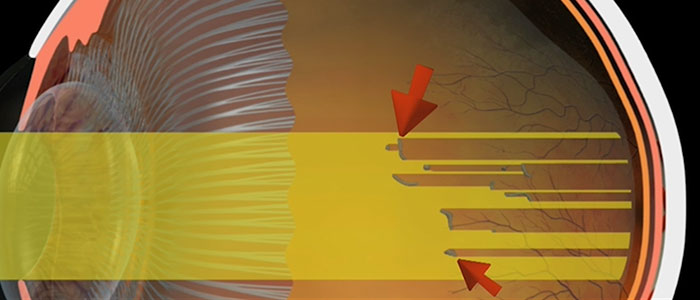
The vitreous is a sac of jelly like substance that fills the eye, and gives it its shape. It is located behind the lens, and is attached to the retina.
As we get older, the vitreous shrinks in size causing it to tug on the retina. As a result, small clumps or particles may appear in the vitreous. Because they are suspended in this jelly like fluid, they often hang suspended and don’t float downward.
As light passes through the pupil and back onto the retina, some of the floaters may be located in this light path. If the light hits a floater, it will form a shadow on the back of the retina and may appear to you as a spot or bug moving around in your field of vision.
Sometimes when the shrinking vitreous tugs on the retina, it may cause you to see a flash of light. However, in rare instances, the retina may even tear from this tugging action causing a flash of light as well. This can be a serious condition which requires immediate attention.
For the most part, floaters and flashes are just an annoyance, but they can be signs of serious conditions such as retinal detachment. If you notice a sudden increase in the amount of floaters and flashes you see, consult your eye care provider immediately.
